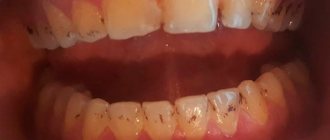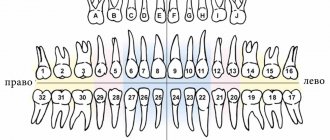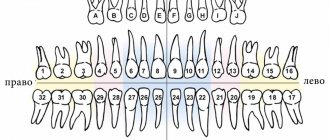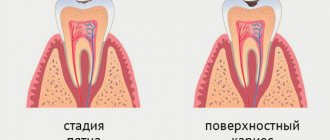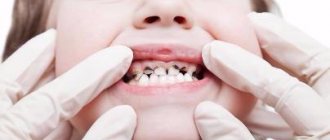Dr. Niklas Bartling (Dr. Niklas Bartling) doctor, private practice, Altstatten (Switzerland)
Flowable Bulk-Fill composites are intended for restoration of the dentin layer of class I and II restorations. The article presents a treatment concept that features optimal restoration technology, high efficiency and good esthetics, making it also ideal for pediatric dentistry.
Filling chewing primary teeth damaged by caries with composites - in comparison with other materials - has long been considered very expensive. With the development of Bulk-Fill technology, the situation has changed dramatically. The labor-intensive layer-by-layer filling of the cavity with filling material has in most cases been reduced to the formation of the entire filling with just one layer. The newly developed Tetric® EvoFlow Bulk Fill composite is designed for exactly this purpose. In combination with other components from lvoclar Vivadent, it allows effective treatment of young patients.
Filling for a child - high quality, pain-free and at an affordable price
Most parents are reluctant to visit the dental office with their children. They perceive this as stress for the child, since they clearly remember their own childhood. In their memories, the dentist is a doctor with a stern look, cold hands and an arsenal of instruments for torture. Fortunately, pediatric dentistry looks very different today.
At the Natadent dental clinic, dental fillings for children are performed by qualified doctors, whose professionalism is manifested not only in high-quality treatment, but also in the ability to find an approach to young patients.
The following features of our clinic help us make treatment comfortable for the child:
A children's playroom where the doctor gets to know each other and spends time in a playful way with the baby before the appointment.
- friendly atmosphere in the office, preliminary communication and explanation of all the intricacies of treatment.
- use of modern tools and materials;
- local anesthesia, sedation and general anesthesia (if necessary);
- colored fillings and other playful ways to motivate a child;
- gifts after each reception
- cartoons during treatment
If you want your child to have healthy teeth and not be afraid of the dental office in the future, bring him to the Natadent clinic. Our doctors perform dental fillings for children quickly, efficiently and in a fun way. Thanks to this, the child will not be afraid and will remember that dental treatment is a short, painless and very important procedure.
Stages of filling
Diagnostics
The doctor conducts an examination and X-ray examination (sight or panoramic image) to assess the depth of enamel destruction. If inflammation spreads to surrounding tissues, treatment with the installation of a temporary filling will be required.
Preparation
The dentist cleans the teeth from soft deposits. Using a medical retractor and rubber dam, isolates the unit from saliva. Gives anesthesia. When working with children, the site of injection of the anesthetic is first numbed (a spray is sprayed or a gel is applied). Next, the doctor cleans the carious cavity (manually, chemically or using a drill) and removes all affected tissue of the dentinal layer. If necessary, remove the pulp and apply medicine for several days. Then he cleans the channels.
Sealing
The doctor checks the quality of canal filling. Then he places the filling material into the cleaned cavity, distributes it evenly and carefully seals the fissures. To make the material hard, a beam of light from a special lamp is directed at it. Removes excess composite and polishes the surface of the unit.
Filling baby teeth
Many mothers are sure that it is not necessary to treat baby teeth, since they are still temporary. And if caries begins to cause severe discomfort to the child, the baby tooth can be removed and you can calmly wait for the permanent one to grow. In reality, primary teeth need to be treated with care and should be treated until they fall out naturally.
Filling baby teeth is necessary because throughout their existence they perform important functions:
- help the child chew food better;
- prepare a place for permanent teeth;
- help to form the correct bite;
- necessary for pronunciation;
- participate in the formation and growth of jaws.
A child needs the ability to chew food well to be healthy and cheerful. Even small caries can form a bad habit of swallowing insufficiently chewed food in chunks. Therefore, filling teeth for children should not be postponed until later. Timely treatment will allow the child to eat better, pronounce words clearly and avoid bite problems.
Light fillings for a child
Modern photopolymer materials used in the Natadent clinic can make dental treatment a quick and comfortable procedure, even for children. There is no need to doubt whether light fillings can be given to a child. The materials we use are absolutely harmless and do not affect children's health.
The main advantages of light fillings:
- Affordable price. Photopolymer fillings, despite all the advantages, are relatively inexpensive.
- Long service life. Contrary to popular misconceptions, light-curing fillings are strong and durable.
- Fast curing. Under the influence of special radiation, the material hardens in just a minute. Thanks to this, it is possible to place several fillings in one visit.
- Minimal tooth preparation. The viscous consistency of the polymer material allows it to reliably attach to chipped enamel and other surfaces after minimal processing.
- Completely harmless. High-quality photopolymer material is completely safe for children.
The use of light-curing materials greatly simplifies filling teeth for children, since it is difficult for a child to sit in one place for a long time (especially in a dental chair). The light filling is installed and hardens in minutes, allowing you to fill multiple teeth in one visit.
What components (materials) are used
Glass ionomer cement and amalgam fillings are a thing of the past. Today, pediatric dentistry has a considerable range of modern, high-quality and harmless materials. For fillings, light-curing composite materials are used, and for the youngest, dentists offer an alternative - multi-colored fillings consisting of glass ionomer cement with a hybrid composite. Installing colored fillings turns treatment into a game. The child can independently choose one of the seven colors presented in the line of material. In addition, these fillings saturate the teeth with fluoride and prevent the development of caries.
Temporary filling for a child
In certain situations, it is necessary to place a filling, the only task of which is to stand for several days, closing the hole in the tooth. Typically, temporary filling of teeth for children is carried out using inexpensive, quick-hardening materials. They are not very durable, but they do their job perfectly, reliably protecting the tooth cavity from microorganisms and preventing pain due to the ingress of food particles.
A child’s temporary filling can be placed on a baby tooth that is at one of the stages of treatment. It is also placed if the doctor needs to make sure that the tooth is cured and will not hurt. In this case, after a few days the temporary filling is replaced with a permanent one (or additional measures are taken to treat the tooth).
Indications and contraindications
Many parents do not want to put fillings on their children's baby teeth. They consider dental treatment to be unnecessary stress for the child, for which they also have to pay. In the understanding of adults, temporary teeth are not particularly valuable, because they will fall out anyway. In fact, the role of temporary occlusion in a child’s life is very great. Baby teeth are needed for:
- complete chewing of food;
- proper development of the jaws;
- formation of a healthy bite;
- preparing the oral cavity for the appearance of permanent units;
- developing clear diction.
Untimely treatment of caries is fraught with chronic pathologies of the digestive tract and ENT organs. Premature loss of temporary units leads to malocclusion and deformation of the dentition. Indications for filling are:
- unit destruction up to 50%;
- deep caries;
- a large reserve of time before the root unit erupts;
- enamel chips;
- the need to restore the anatomy of the crown after treatment of pulpitis or periodontitis.
Temporary units that are subject to deletion are:
- mobile;
- destroyed by more than 50%;
- will soon be replaced by permanent ones (determined by the length of the roots according to X-ray examination);
- collapsed despite previous filling.
Would you like us to call you back?
Dental treatment under anesthesia
General anesthesia is an effective way to make the treatment process as comfortable as possible. The child simply falls asleep and wakes up with healthy teeth. Thanks to this, the next time he will not feel afraid before visiting the dental office.
Dental filling for children under anesthesia is preferable in the following situations:
- treatment will last more than an hour;
- it is assumed that the procedure will be painful (when treating distant teeth or advanced caries);
- you need to fill several teeth at a time;
- local anesthesia is not possible (for example, due to allergies);
- it is not possible to place a filling on the child, since any actions in the oral cavity cause a gag reflex;
- unable to overcome panic fear of treatment.
The Natadent dental clinic employs qualified anesthesiologists who will calculate the dose of the drug with maximum accuracy. Thanks to this, the child will wake up immediately after the procedure, and drowsiness will pass very quickly. Modern drugs are completely safe and are used in the treatment of children over 3 years old, so any worries about the consequences are unnecessary.
Colored fillings
Colored fillings for children are a great incentive to withstand the test of the dental chair. Fillings look interesting on teeth, delight with bright colors, and lift the spirits of children and those around them. In addition, colored fillings are of the same quality as simple fillings. They serve faithfully until the change of baby teeth.
Indications for the use of colored fillings
Colored fillings differ from simple fillings only in color, so the indications for their installation are the same. This is the presence of caries of milk teeth, pulpitis, tartar. Causes of concern are plaque, tooth mobility and early tooth loss.
The danger of primary tooth disease is that the roots of primary teeth come into contact with the buds of permanent teeth, which leads to caries and premature tooth loss.
In addition, premature loss of baby teeth leads to changes in bite, facial contour, and diction. Poor chewing of food leads to diseases of the digestive organs. A tooth with caries is a source of infection in the child’s oral cavity, which affects both the remaining teeth and internal organs, because microbes are carried throughout the body by the bloodstream. That is why dentists recommend not to ignore small defects on baby teeth, but to regularly come for preventive examinations and treat teeth from an early age.
Contraindication
A contraindication to the installation of colored fillings will be individual intolerance to individual components of the material.
What are the advantages of children's colored fillings?
Colored fillings are a psychological maneuver to distract the child’s attention from the upcoming therapeutic procedures. Choosing the color of the filling together allows the baby to be distracted, recharged with positivity and pleasant anticipation. But besides the mentioned aspect, colored fillings have practical advantages:
- They consist of a material specially designed for baby teeth.
- Colored fillings last up to 3 years, lasting until permanent teeth appear.
- A plastic filling material that allows it to fill free space, cracks, and crevices.
- High hardening speed.
- The filling is firmly attached to the tooth enamel and can withstand the stress of chewing.
- Thanks to the bright color, filling defects (chips) are immediately visible.
- The fillings contain fluoride, which prevents the development of caries. In addition, the filling absorbs fluoride from food and releases the microelement to the tooth.
- The material does not require preparation; it is placed into the tooth cavity from a special sealed capsule, which reduces the time of therapeutic operations.
- The price of colored fillings for children is almost no different from simple fillings. Prices for colored fillings vary from one dentist to another.
- Children love to look at rainbow-colored teeth in the mirror and it makes them interested in oral care.
- Colored fillings are placed on the back teeth, and traditionally colored fillings are placed on the front teeth.
Types of fillings
Colored fillings in pediatric dentistry are blue, silver, gold, orange, pink, yellow, and green. Here the choice of color depends only on the little patient. Princesses choose pink, golden, and orange fillings, and knights choose silver, green, and blue. A popular manufacturer of colored fillings is the German company VOCO. For the most part, reviews on the Internet about colored fillings and their prices are positive. Parents note that the child experiences less fear, is interested in the dental treatment process, and is more willing to take care of his teeth in the future.
Prevention of caries in children
The main way to keep teeth healthy is prevention. Therefore, you need to take care of children's teeth seriously from an early age. It is important to understand that the child is not able to take care of the oral cavity on his own, and the responsibility for this lies with the parents. Dental health is determined during the prenatal period, and the expectant mother should take vitamins containing calcium and fluoride.
You should take care of your child’s teeth from the moment the first tooth appears. It is worth purchasing a special silicone brush and age-appropriate paste, with which you can keep your mouth clean. There are a lot of tips on how to preserve your child's teeth. By adhering to the recommendations, parents lay a reliable foundation for the child’s health.
Reviews
Taking your child to the dentist’s office is an important undertaking, because in childhood a lifelong attitude towards one’s own health is formed. Therefore, we make every effort to ensure that young patients and their parents have only positive emotions after dental treatment. You can judge this by reading the reviews about the Natadent clinic left by our clients.
We will be grateful if you also leave a review describing your impressions of the visit. This will be an excellent hint for us about which aspects of our work are especially important for young patients and their parents. We strive to be the best and are happy to improve with your help!
